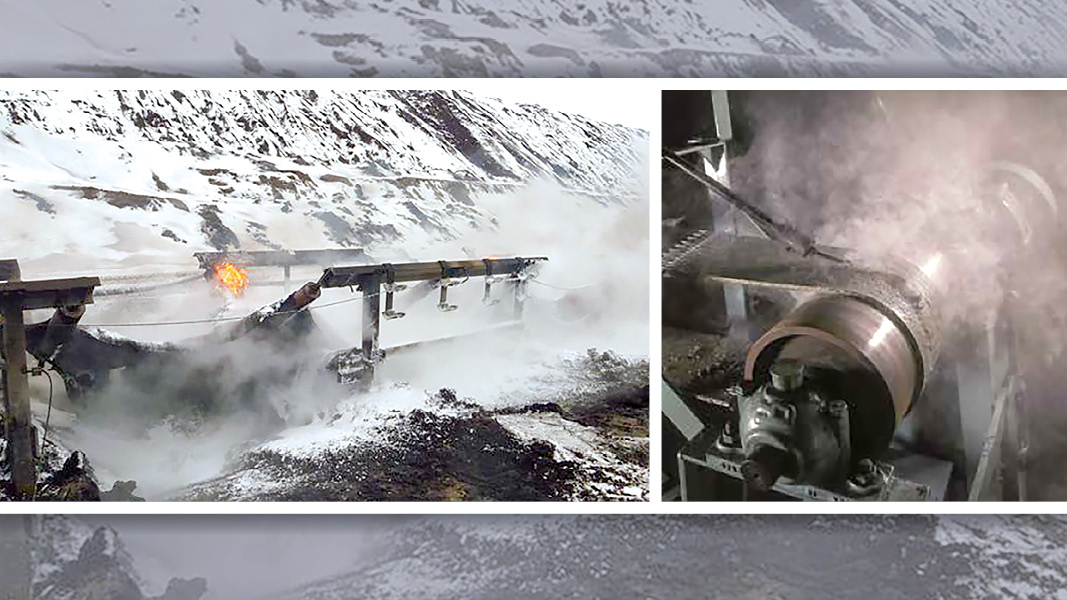Top: Conveyor fires (left) can be cause by friction, dust, mechanical failure and other factors. Friction heat between rolling components (right) can be extreme enough to light both the material and belt. Photos courtesy of Martin Engineering
Combustible dusts and gasses are prevalent in the handling of bulk biological material, from compost and mulch to biofuels to fertilizers. Without proper handling, spillage hazards can build and dust can concentrate and be ignited by the smallest spark. Martin Engineering, a bulk materials handling equipment manufacturer, collaborated with the authors of Foundations™ for Conveyor Safety, to create how-to guidance that covers fire prevention. Ignition sources for conveyor fires fall into three general categories — friction; dust/material/chemical; and mechanical/maintenance.
“For example, a source of friction is inadequate belt cleaning in the discharge zone, which can lead to dust and carryback on the return side of the belt, causing a fouled tail pulley to run under a stalled belt, which creates tremendous heat,” explains the guidance. “Dust emissions of any kind (combustible or noncombustible) tend to foul rolling components eventually causing the roller to seize. A rolling component can also stall if impact or cargo weight causes the bearings to collapse. Continuous frictional contact with a seized idler or the roller face can cause a loaded belt to exceed safe operational temperatures.”
Controlling fugitive material requires proper belt cleaning, chute sealing and belt tracking. Spillage that collects around the loading/discharge areas can potentially act as fuel. Dust control is extremely important when handling combustible substances. “Significant amounts of dust in an enclosed area (transfer chute, loading zone, etc.), when exposed to high heat/static or a foreign metal object, can potentially create an explosion,” states the guidance.
Ongoing fire prevention strategies include:
- Reduce fugitive material by providing a flat, stable belt surface that facilitates effective sealing.
- Installation of heavy-duty belt cleaner system limits the amount of carryback, spillage, and fugitive dust.
- Regularly contain airborne dust at transfer points and remove accumulation.
- Replace damaged rollers promptly. Conveyor belt alignment is also an essential prerequisite to belt safety.
- Test fire detection and suppression systems in accordance with regulatory standards.














